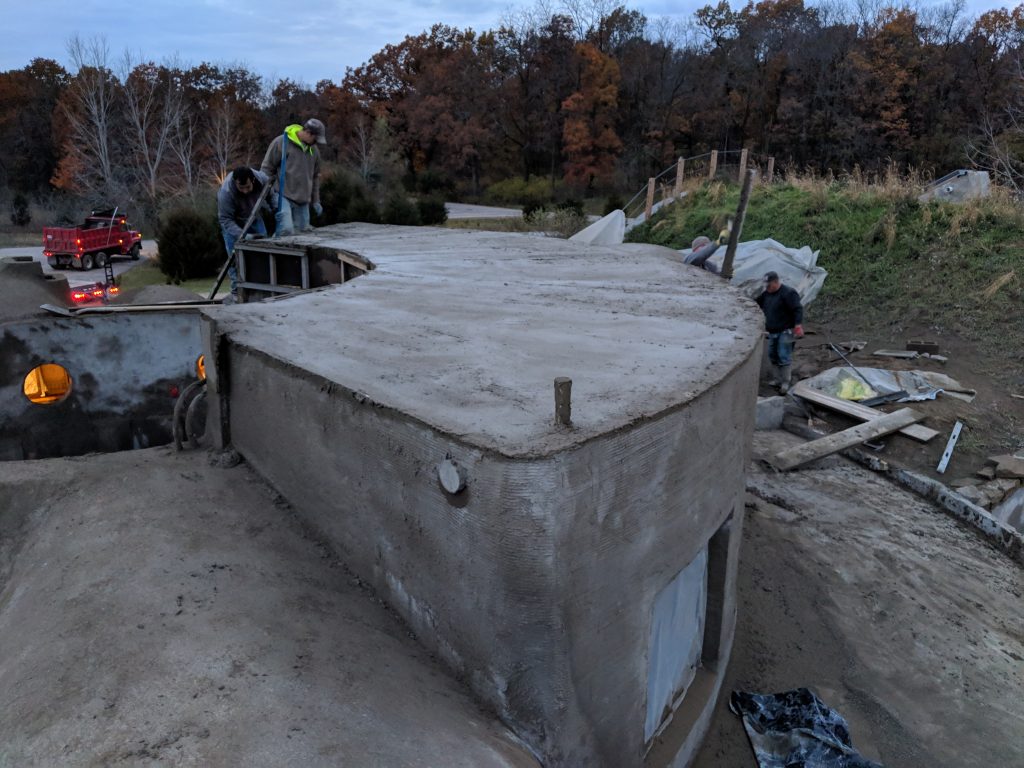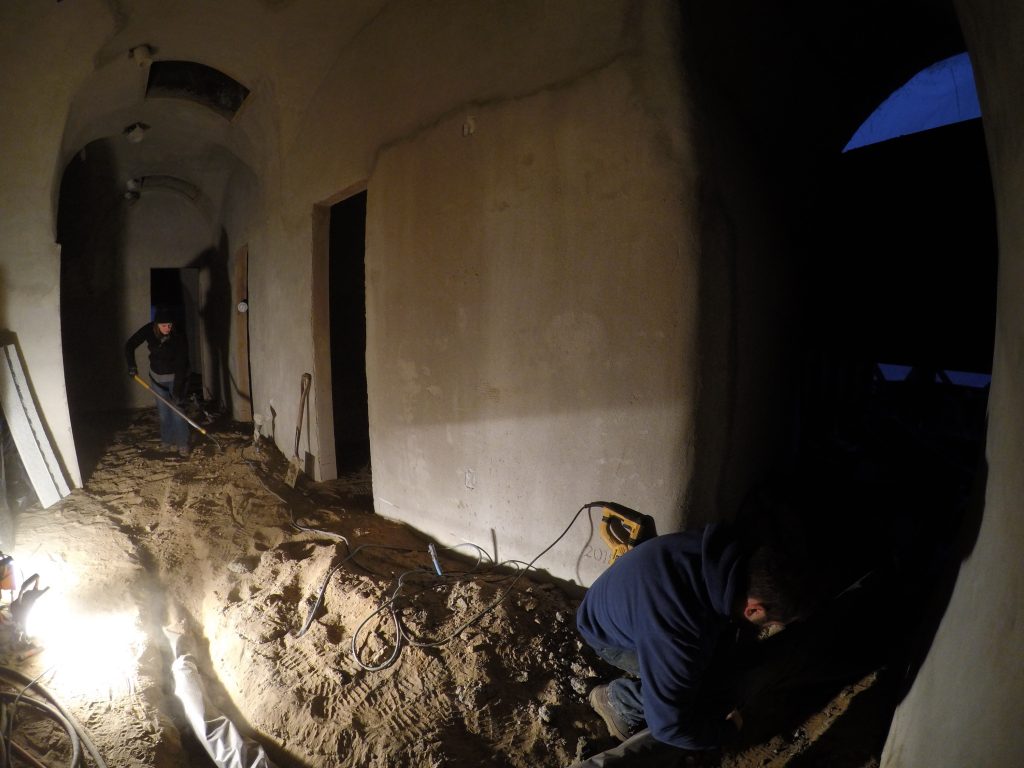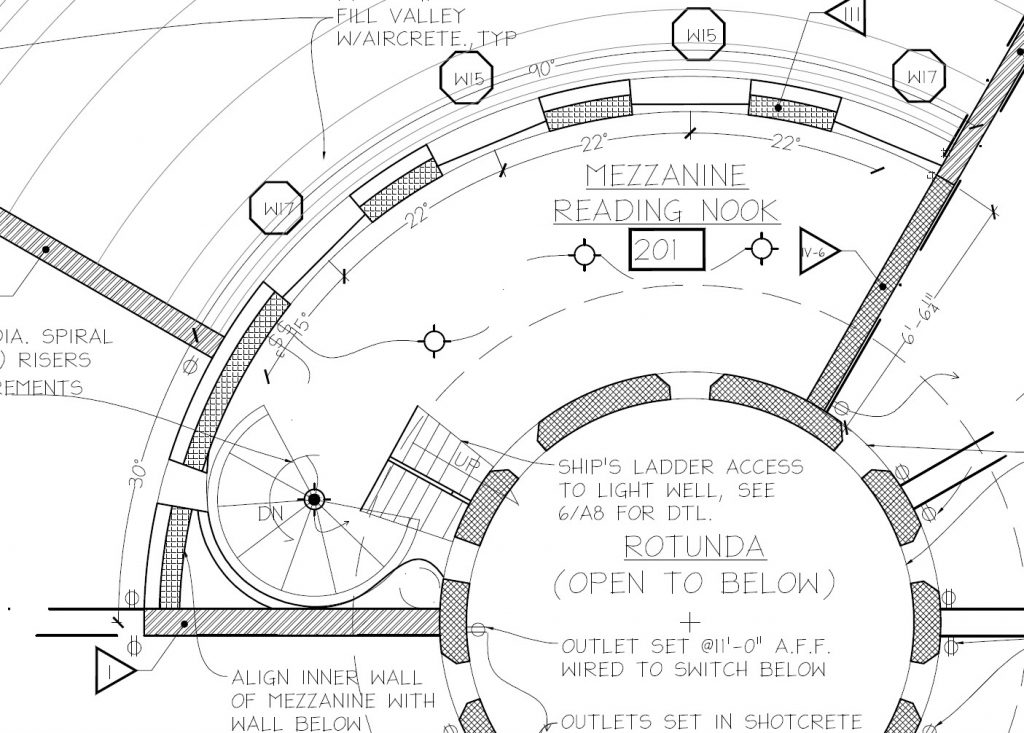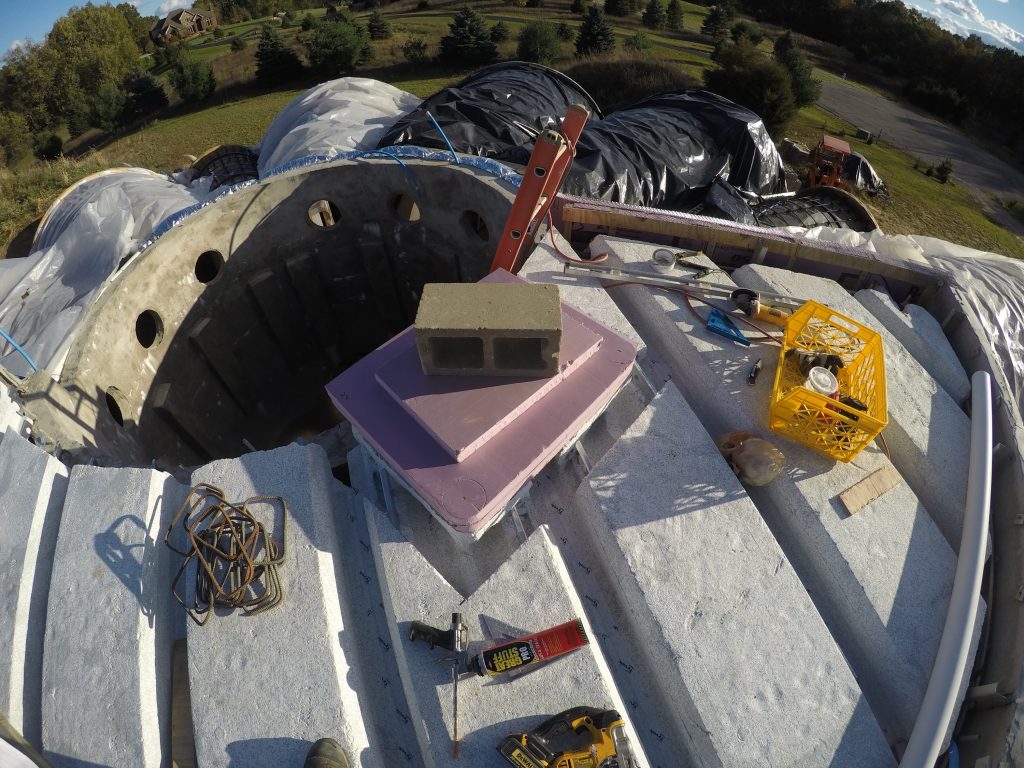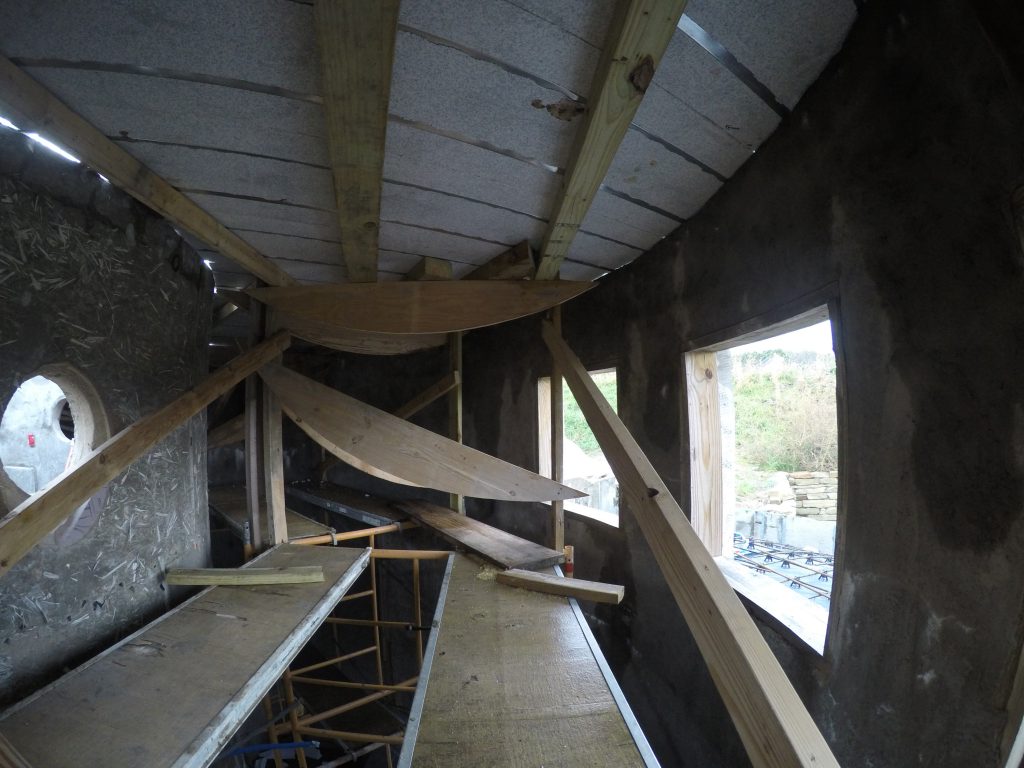Shooting a Gunite Roof
Posted on October 30, 2018 by
This one is the long awaited shooting of the gunite roof. As per usual, we’ll start with the time lapse video and end with a gallery. If I am up for it, I’ll post some lessons learned in between.
The video
Lessons Learned
Gunite vs Shotcrete: This topic was already covered, but I’ll link to it here. I’ll also add that it is all in the mix. If your gunite is just a basic sand and portland mix, it isn’t going to be as strong as a shotcrete mix with some fancy additives, heavier aggregate, etc.
Lath and Screen vs Hardboard: For the shotcrete, the lath and screen worked well. None of the shotcrete passed thru the screen because it uses a pea stone aggregate. However, the gunite used sand as the aggrigate and did pass thru the screen. The hardboard was great in some ways, but the weather really beat it up and gave it a rippled surface.
Shooting and finishing: Both are important. My shotcrete crew could have done just as good a job as the gunite crew, but they didn’t. For shooting, you want someone who understands what you need to get done and is just putting up what you need. If they are paid by the cubic yard, they may put up more than you need, etc. You definitly want enough finishing people to finish the surfaces adequately. If your crew is strong on shooting, but doesn’t have enough man power to finish, you will be sad.
Cleanup… If the crew treats cleanup as an afterthought, you will be sad. There will be mess. Make sure the crew has enough man power to deal with it. Beyond that, you probably need to keep your eyes open for things the busy crew may miss. For instance, I wish I had better covered some of the near by boulders to prevent them from getting gunite on them and I really wished I had better cleaned off the polished concrete ribs before the gunite set. That mistake cost me many many hours.
Do it yourself? My rule of thumb is that if a job takes tens of thousands of dollars worth of specialized equipment, you probably shouldn’t be doing it yourself. Add the experience, skill and stamina required and I would double down that you probably shouldn’t be doing your own gunite or shotcrete. That said, I do know of some who have and kudos to them.
Gallery:

Here are the forms, ready to go. Everything was damp and unpleasant. 
A panorama of the south side of the house. Today, the focus is the roof, but this crew will also do the south side walls and I’ll make that the next post. 
Panoramic of the equipment that arrived the first day. If any job requires this much equipment to do right, you probably shouldn’t do it yourself… 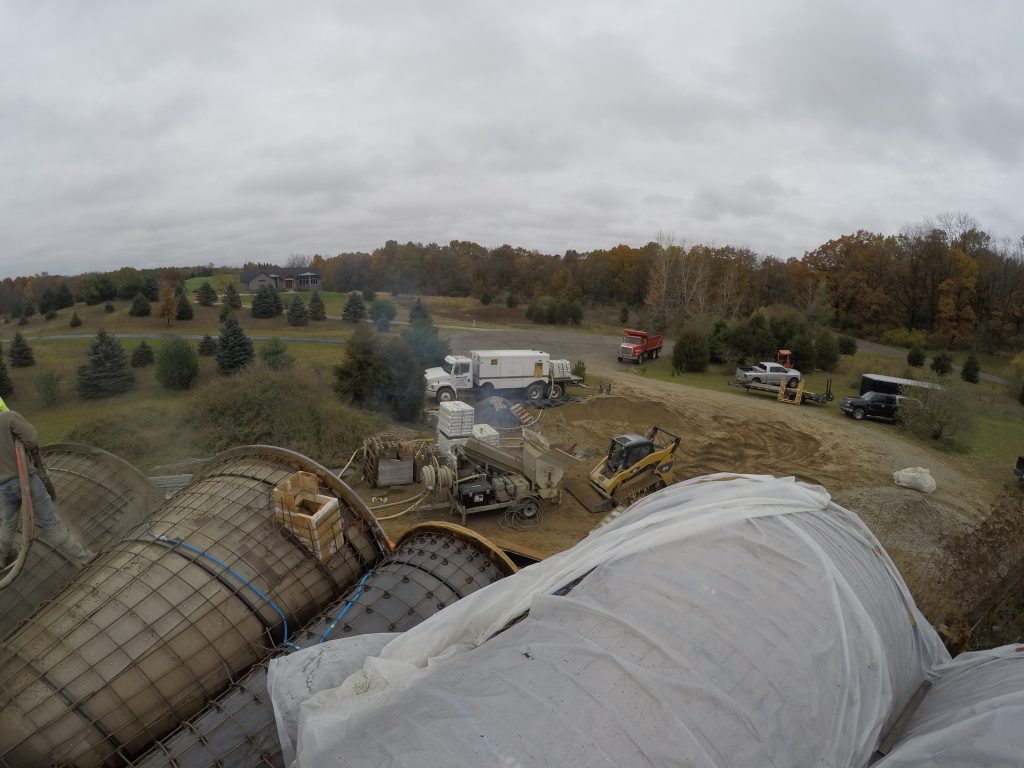
Again, I know some people do their own gunite. I just wouldn’t recommend that for most. 
Actually, this first mix wasn’t quite right and they had a bunch of yelling and hand signals back to the rig and made some adjustments. Once they had what they wanted, they moved pretty quickly. 
The biggest issue in this pic, other than the momentous start of the long awaited gunite, is the mess streaking down the walls and over the floors… 
This is about the point when the curved rebar conked in (curved backwards) in this one wide area. Not ideal. 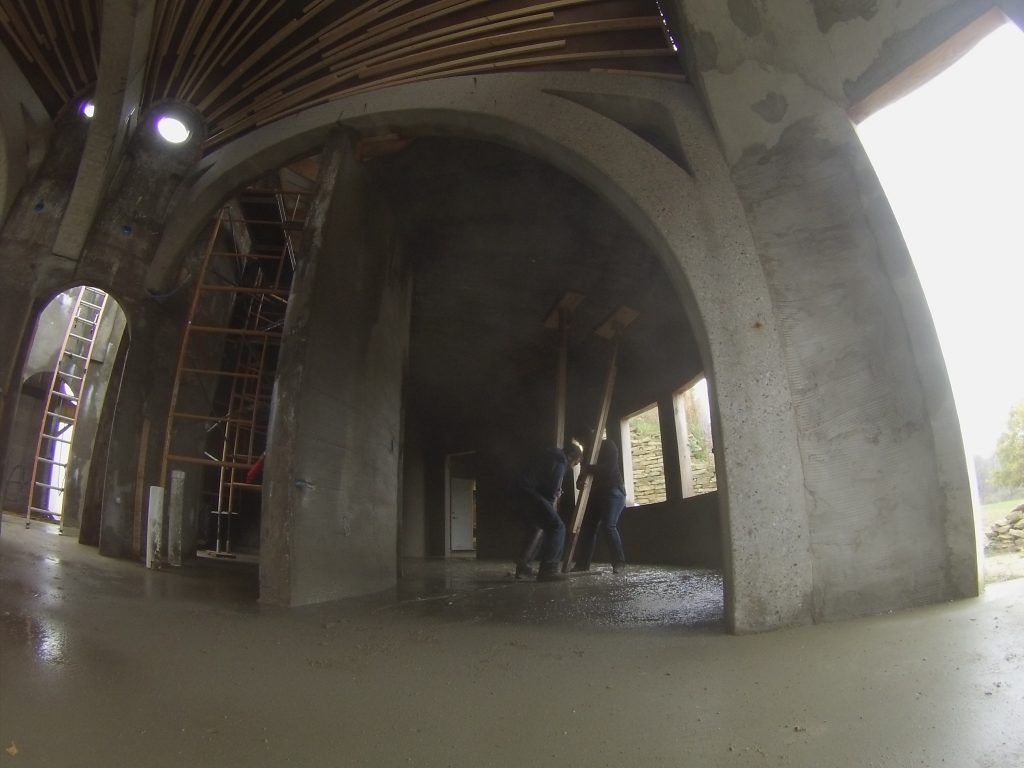
Sherri and I working together to brace the ceiling. 
Sherri and I cleaned up the mess. I think she is smiling because I said something like, “If I take the pic, everyone will think you cleaned this up by yourself.” And she said, “I am.” 

By this point, the rest of the crew was packed up or gone. A very early day for a gunite crew because of Halloween. It was just a few hours. 
Scott was quite the artist when it came to finishing work. He is also the owner of the company. 
This is the finished guest room section. The 4 inch gap at the top end is to tuck the insulation and waterproofing under. 
Here is the finish work on the first vault at the end of the first shoot day. Unfortunately, this area got messed up by the hurried rain finishing with plastic over it the second day. It went from being the prettiest to the ugliest. But either way it will be buried eventually. 
It was never caught on film, but I was running ahead of the crew and used up 2 jugs of this stuff ahead of where they were shooting. This just helps the new bond with the old. 
Here the mix needed to be thin so it could get around the pipe and rebar and fill the area properly without voids. But it was a bit too thin and found its way around the edge of my formwork and onto the floor below. 
Here is a look at the mess below. It doesn’t look that bad here, but keep in mind that it was well over an inch thick. For depth scale, that doorway has a 2×4 across the bottom of it and the slope goes up from there. It took many buckets full to clear this up. I did do a quick wipe down of the sides of the concrete ribs, but I didn’t do a good enough job and spent hours more polishing it later. 
Here I am cleaning up the mess… In the background, you can see one the plumbers who showed up on this crazy day. He is putting a faucet on the outer wall. 
See the video for more detail about what is going on here. 
I got to try the Gunite Nozzle for a few minutes. Fun isn’t the right word for it, but I was glad I got a try. 
After cleaning up the mess in the guest room, I put up this plastic to catch the mess in the first lath vault. This vault was two small with two tight a radius of curvature to use the hardboard panels. I basically put up sticks of scrap wood with plastic screwed to them. I figured the plastic would catch the mess. 
You can see that the quick-thinking sticks and plastic plan did hold up. I was pretty happy with myself at the time, but less happy when I tried to get that down after it hardened. Not always as smart as I think I am. ¯\_(ツ)_/¯ 

Carlos and Ben Shooting. I couldn’t tell if Carlos wanted me to take his pic or not. On the previous job, he was downright posing for me. But this time, he seemed a bit more reluctant. Maybe it was a bad hair day. 😉 
Here Carlos is going to relay a message (via hand signals) to the rig crew. You can also see inside that vault to the mess that fored on the plastic… 
For this second lath vault, I just had enough time to cover the wood and the sand, and I had already started thinking about how I would get the mess from the earlier vault down again… But I did end up needing to spend about 8 or more hours cleaning the ribs off later. They had so much gunite on them. I really should have washed them right away. 
All the wet gunite in here gives it an interesting look. We plan to “wet seal” these ribs when the whole thing is done, so we’ll see this again, without the mess. 
Check out this guy, just standing on the edge like it was nothing… 
This was the best pic. The gunite looks so soft and velvety. 




This was a rare opportunity to get really close for a pic. 
This went on all day, so I got a few similar looking pics. If you are wondering why I showed so many, you should see all the ones I didn’t show 😉 
Especially after that first section conked in, it was pretty brave of the crew to keep on going. Here is a momentary balance shift and recovery. It is pretty dangerous work. 
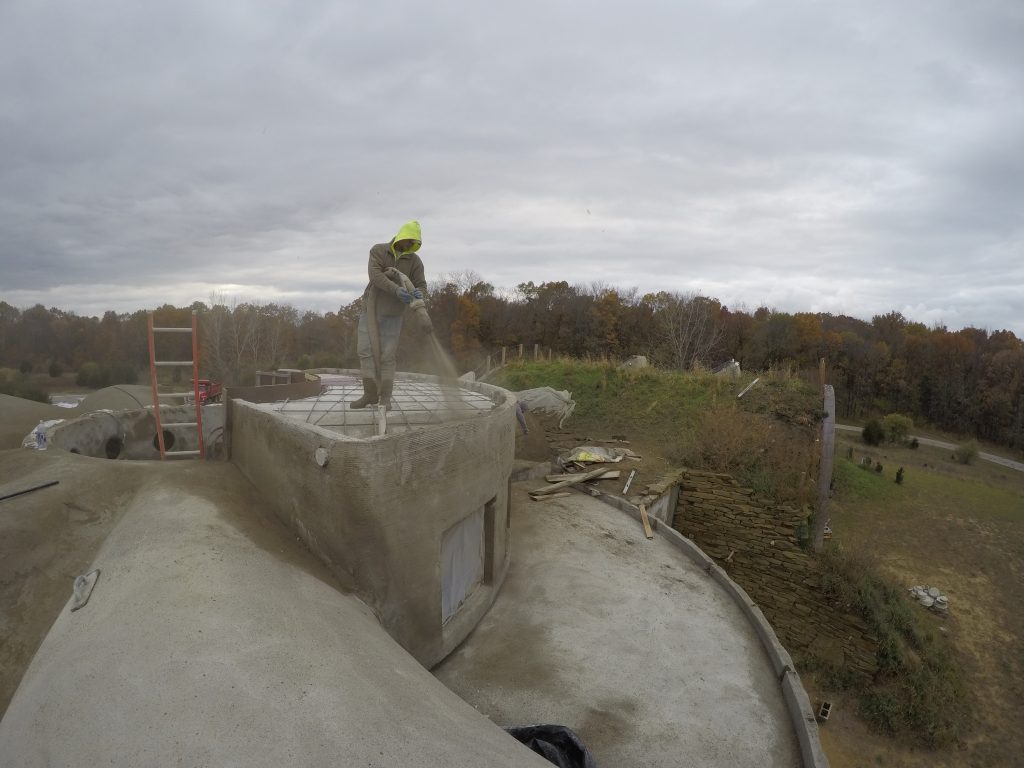

The sun had set not long ago, now everybody goes below. To take a bath in one big tub. With soap all over, scrub scrub scrub. Bonus points if you can name that author 😉 
The panoramic feature on my camera did something interesting with this roof shape 